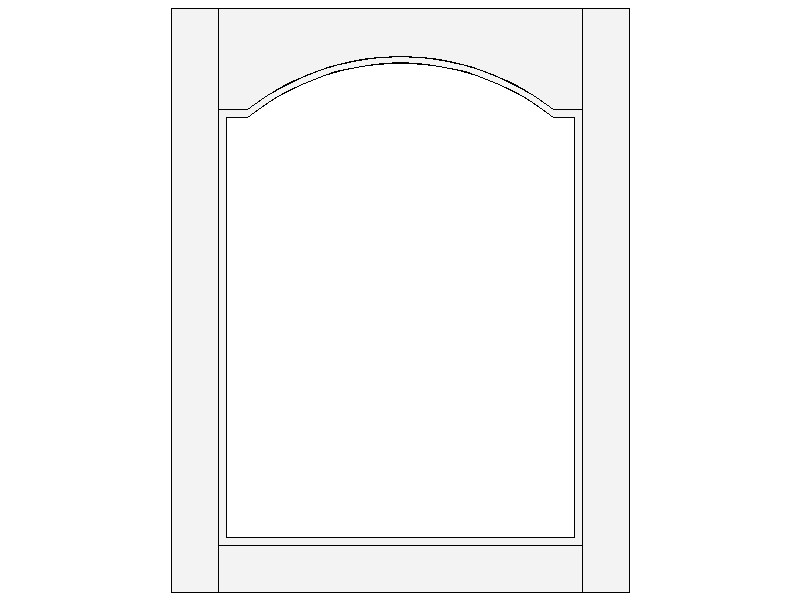Squaring Up Plywood
Out-of-whack plywood can throw off all your cabinet carcase dimensions. Here, cabinetmakers discuss techniques for truing up plywood when the factory dimensions are off. October 22, 2005
Question
I am wondering what to do when you canít rely on the factory edge being straight? I have found that the factory edge is not always straight. How do get a good square box if you donít have straight to begin with? Can you cut oversize and trim? It seems like to much re-cutting to me.
Forum Responses
(Cabinetmaking Forum)
From contributor C:
On a sheet, put the short edge against the crosscut fence in the aft position and rip a 6 mm dust cut off your long side. This will do it, but to make doubly sure you can then place the freshly ripped edge against the crosscut fence and dust the short side. Then if your saw is set up properly you'll have a perfect 90 degree angle and 2 good edges to reference from. I never trust a factory edge, ever.
From the original questioner:
Thatís great if you have an 8 foot slider. But with a standard cabinet saw with an exactor/ecaliber slider I donít think thatís possible.
From contributor C:
I hope you aren't doing frameless.
From the original questioner:
No itís not a frameless.
From contributor K:
Is it possible for you to make a jig that is the length of the material (8') and perfectly straight that you will have running along the fence so that you can cut the piece straight? You will have to cut your material probably 1/4-1/2 bigger then the final dimension. An example would be to cut your cabinet material to 23 1/2. Your jig will have an L shaped end on the side that is farthest away from you. This will keep the pieces running together as you run them through the saw. If your jig is true and straight after you rip your piece it should be true and straight. Rotate it and cut the other side parallel. Set up the excalibur and cut to length.
From contributor J:
This sounds like a job for a Festool saw and 3 miter guide rail. Sure it costs money, but at least you are guaranteed a straight edge and you won't need 16 feet of travel space
From contributor P:
The Festool saw system is excellent. You could also get a cheapie safety speed cut vertical panel saw for around $1200. It probably would give you relatively straight cuts. If nothing else, a vertical saw certainly saves your back if have a small shop and work by yourself.
From contributor G:
The most economical way to do this is with a long, straight piece of wood about 8-1/2' long and 5-6 inches wide with straight a joined edge and a pattern bit, the kind with a bearing at the top. Clamp the straight edge to the pw at about 1/8" from edge, rout, and presto a straight edge.
From contributor M:
I don't have any great sliding saws either. What I use is a machined straight edge clamped back 3" from the edge (the distance of my router plate) and then run the router with a straight bit down it. Once you get the long cut straight, the others are manageable.
From contributor W:
I've obsessed over the same problem for years. It even drives me crazy in the summer months when I notice that my MDF sheetgood even bow a little after ripping. But the fact is, once I get to the job and install, I don't know where the slight curve that was there before went to because I had no problems with alignments or anything during the install. I don't have a panel saw either I still use sleds for crosscutting sheets.
From the original questioner:
My problem is when cutting the 34 1/2 dimension I will get 34 1/2 on one end and 34 7/16 or maybe worse on the other. My slider is sliding square but I am assuming that since the original edge may be off then its affecting the rest. To me the 34 1/2 is a critical measurement.
From contributor L:
I use my table saw sled. I have learned that the factory edge is not straight and sheets are not square. I just treat it that way. I will cut my widths along the 8' lengths and then us my sled to cut the 34.5", cutting a 1/4" over on my first cut and then setting to 34.5" and cutting the actual size. I check corner to corner and I am satisfied if they are 1/64" or less out of tolerance.
From contributor S:
There are many good responses here. I agree with what Contributor C said, unless you are looking to beat this subject to the ground. Put your fresh cut against the crosscut fence and cut the new edge. Then continue to rotate fresh edge to the cc fence. If you have an excalibur, you can do this. Will it take more time - yes. Will it be as accurate at my Altendorf - no. But this is a choice that you will have to make, more time or more money. You can either spend the money to make highly accurate cuts or spend the time to make them.
